FEATURE: When Oakwood Changed Everything
thirty years later, Eau Claire’s biggest mall remains a commercial and cultural touchstone
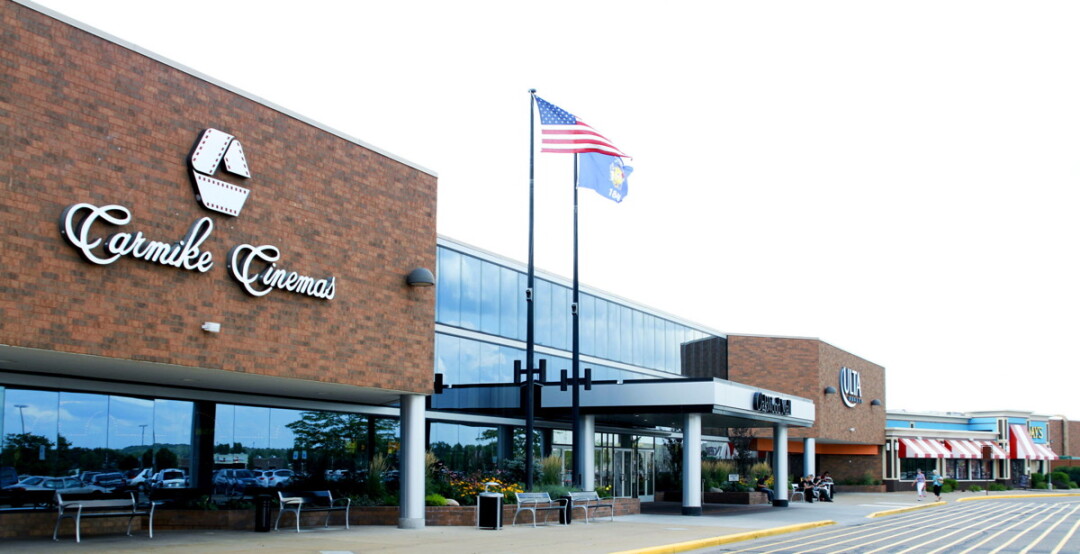
Among the most well-known commercial jingles of the Chippewa Valley is a tune that debuted in 1986, one of the last vestiges of those 1980s-era ads with a chorus of singers, an optimistic message, a string section, and a sax solo. “Oh! Oh! Oakwood!” announced the arrival of a new lifestyle mecca in the Eau Claire area, a signal that we need not go to the big city – namely, the Twin Cities – to feel a sense of aspiration. The vast Café Court, the skylights and shimmering gold ceilings, the attached movie multiplex, the asymmetrical layout with so much space for expansion – Oakwood Mall was the new destination for western Wisconsin. The time for the mall’s 30th anniversary has come, and in reflecting on the impact of Oakwood Mall, one realizes that it more than succeeded in its mission. In fact, one could argue that other areas of development in the immediate area draw even more traffic at certain times. To look back, destiny was set for such an array of consumerism, in a perfect setting of a field and growing highways. And while you may think the mall played a role in accelerating the somnambulant feel of 1990s/2000s-era downtown Eau Claire, hindsight shows that this destiny was bound to draw the big shops away so new shops could now thrive in the heart of the city. Oakwood Mall is one of the cogs to the Chippewa Valley; this is the story of how the cog was created.
“Oh! Oh! Oakwood!”
Considering that Eau Claire was a city of about 45,000 people in the 1970s, you would not be out of line to ask why we needed a mall, since we had just built a new one. London Square Mall opened in 1971, beginning the flow of the likes of Sears, Woolworths, and Prange’s away from Barstow Street to expansive square footage in open fields. Expansive, yes, but not endless: While London Square opened on flat land, it was surrounded by the U.S.53/Highway 93 interchange on the east (with both roads angling to the north and south side) and the new Mall Drive to the west. The Eau Claire area would not stop growing, but London Square Mall would have to do so at some point.
Richard Larson saw an opening – literally. As the founder and chairman of Larson Companies, real estate was his profession, and in the mid-’70s, he had an opportunity to develop about 800 acres further to the southeast of London Square. “You find a piece of property between a growing town and an active highway, a new highway, and this kind of filled the bill,” Larson says. A sale was made, a partnership with Owen Ayres Associates – where Dan Clumpner was already employed – was established, and Keystone Corporation came into being. In September 1977, the announcement was made by Dayton Hudson Properties: This would be the site of a new mall.
There was not much to see at the time, according to Larson: “A cornfield and cows out there, raccoons, wild turkeys. No roads, zero roads, nothing.” However, the vision was apparent. “I’ve been known to go out and sit out there at night or in the morning by the highway or something and just think and let my mind run wild and, ‘What could you do with this?’ ” he says.
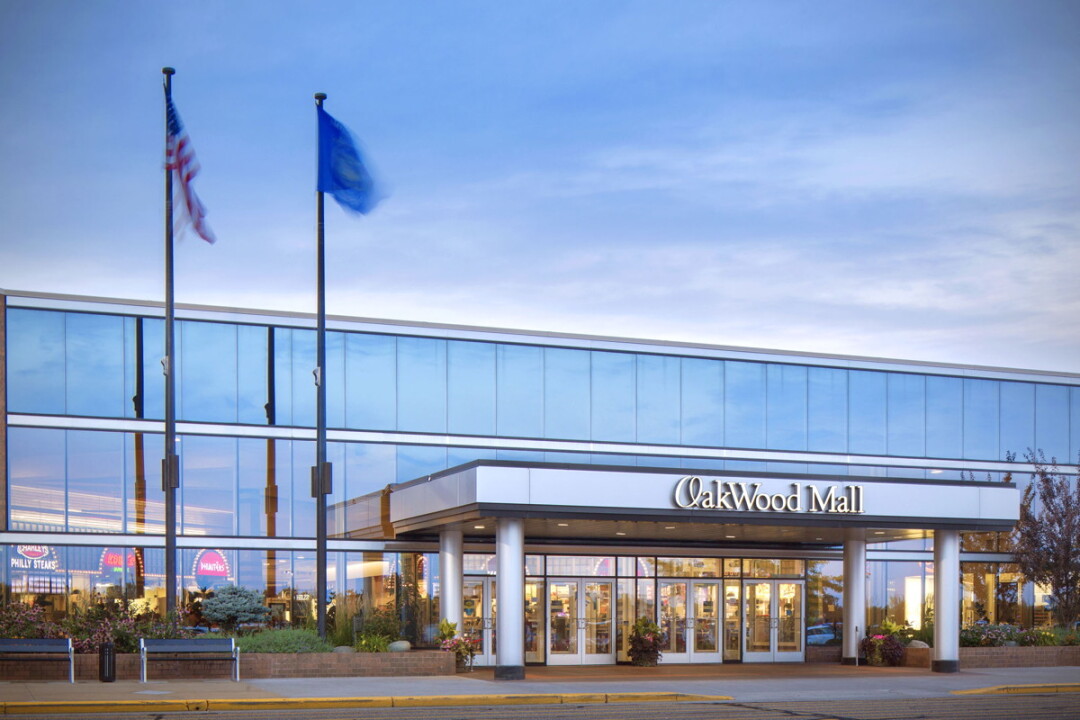
“Oh! Oh! Eau Claire!”
Eau Claire was not sure quite what to do. Nearby residents were concerned about the presence of increased activity in a quiet part of town, and London Square Mall’s management advocated against the establishment of a newer, larger rival. Mark Lewis served on the Eau Claire City Council in the early 1980s, and recalled one plan to stanch the commercial bleeding from the city’s core: “The prevailing wisdom on the Eau Claire City Council was to put a Plexiglas dome over Barstow Street to lure major merchants back into downtown.”
“The prevailing wisdom on the Eau Claire City Council was to put a Plexiglas dome over Barstow Street to lure major merchants back into downtown.” – Mark Lewis, former Eau Claire City Council member
Clumpner recalled a meeting where the need for a new mall was questioned. “The stores that were downtown at that point were not going to stay downtown, and the current mall couldn’t handle expansion, and something was going to happen in the community; do-nothing was not an option.” Lewis notes that “with the advent of automobiles and inexpensive gasoline, (the) major merchants who were clustered in downtown went to malls in the periphery. It started in the larger cities, but it’s been in all cities. And you can’t fight that.” The total population surrounding Eau Claire was ripe with potential; following the sale of the mall plans to The Center Companies and, eventually, General Growth Companies, the latter organization, in Clumpner’s words, “projected a 350,000 to 400,000-person trade area that went to Thorp, it went Rice Lake, it went to Menomonie, and it went to Whitehall.”
It also needed something that has been the subject of much municipal discussion this decade: a TIF district. The concept of a Tax Incremental Financing district was relatively new in the 1970s, but it was fortuitously available as a financing option to allow the mall plans to proceed. Clumpner considers it key to the Oakwood Mall project, when factoring the early payoff of bonds, the paying off of another underperforming TIF district in Eau Claire, and the prime result: the multimillion-dollar tax base in the commercial zone. “So the taxpayers had virtually no investment, created tremendous tax base, regionalized the trade area to grow all these other industries, plus, fueled the industrial development,” he says. “And, how do you do better than that?”
The recession of the early 1980s put a brief delay on the plans, but once traffic studies were completed and the infrastructure was set – for example, the extension of Golf Road past Highway 93 and into the interchange with U.S. 53 – the mall could be built. Shovels arrived in 1985, and in 1986 ribbons were ready for to be cut.
Oakwood Mall's Grand Opening (1986 WEAU-TV Report)
“Oh! Oh! Oakwood!”
My first memories of Oakwood Mall as an 8-year-old that autumn were visiting the new Target before the main mall’s opening, gazing at the massive temporary wall dividing the store from the rest; and my mother driving us to the main entrance one October afternoon to visit the new complex, only to discover that mall was still off-limits so the governor could get a sneak peak. Eventually, we saw it for ourselves: For many, that first time was Oct. 15, 1986, the grand opening of Oakwood Mall.
That day may be familiar to a younger generation thanks to an archival video posted online by WEAU-TV in 2015 of a 1986 news story detailing the pomp and circumstance on the southeast side. There were tall balloons, a marching band, an indoor fashion show, a mime, and many older shoppers wowed by the presentation. Watching the story, you may also have seen a man with lighter-colored hair on the dais behind the podium – he is Mike Olson, then the general manager of the mall’s Essaness Theaters, now the head of Micon Cinemas.
My family had moved back to Eau Claire in the summer of 1986. Olson’s family moved here at about the same time; he had been sent from Chicago to manage the new cineplex. There was not much there for Olson. “My office was chalk marks,” he recalls. “I built a desk out of two saw horses, with a piece of plywood, and set up shop to open up a brand new beautiful six-plex in the Chippewa Valley.”
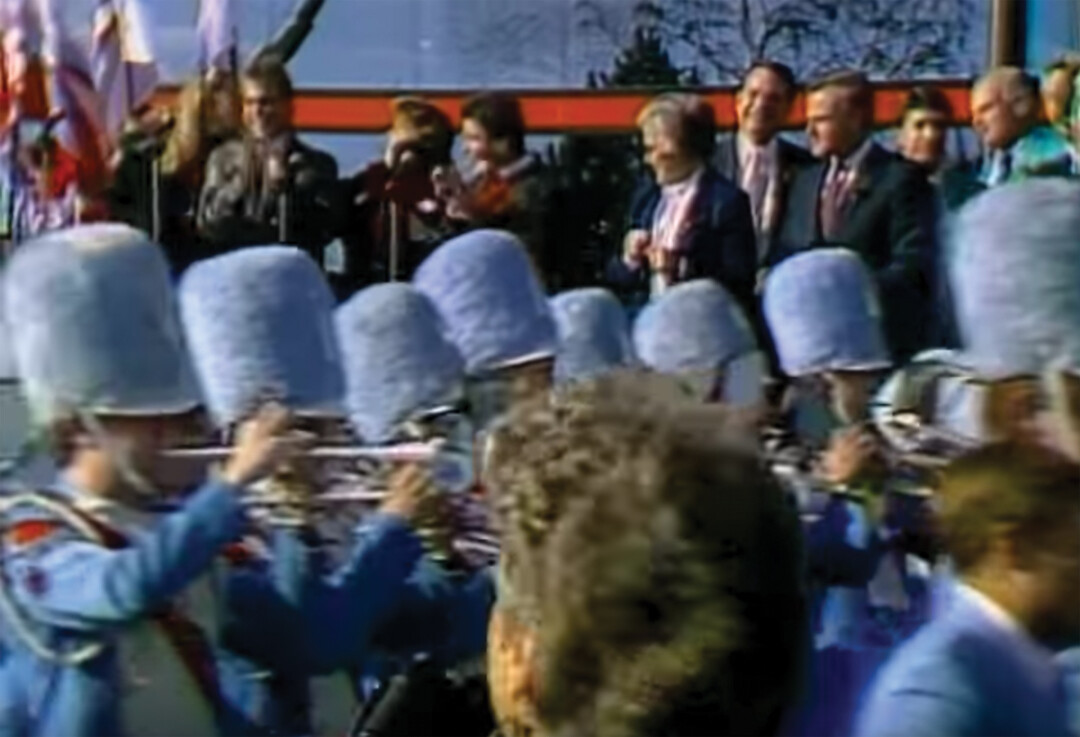
Alas, opening day arrived, and to be part of such a grand occasion was a point of pride for so many involved. Larson’s thoughts were concise: “Hooray!” Clumpner’s recollection: “It was an extraordinarily exciting moment. Extraordinary. And the community response was marvelous. Yeah, that was a wonderful day.” Olson recalls saying to the crowd at the ceremony: “Get ready, Chippewa Valley, the curtain is going up soon.”
Of course, Olson and Essaness had to raise the curtain on something, and something was hard to obtain. According to Olson, longtime Eau Claire movie proprietor Gene Grengs knew what was coming and booked all the new flicks. Olson’s promotional response upon opening his new theaters? “Free admission!” with the likes of second-run films such as Ferris Bueller’s Day Off, followed by a $1 promotion with Z-100, before finally getting current movie rights later that autumn.
This was an astute sign of the Eau Claire cinema landscape that has now been established for the past third of a century: Essaness was later re-christened as Exellence and then was bought in the 1990s by Carmike, while Grengs’ London Square Cinema eventually becoming the first Eau Claire expansion of Olson’s Micon Cinemas, which he started after departing Carmike. The quick viability of Oakwood’s built-in movie theater is one of the most-effective answers to the questions about consumer demand during the planning phase of the mall.
So is the presence of people. Malls can be cities unto themselves. Consider Mall of America, which is large-enough to warrant its own ZIP Code. You may be forgiven for thinking of Oakwood Mall as the true downtown of Eau Claire, and for all practical purposes that is an apt description for this area on the outskirts of the community over the past three decades. People from Eau Claire, neighboring municipalities and, really, anywhere across the Chippewa Valley consider it their magnet for buying product; the mall gets an estimated 9 million to 10 million visitors annually. Take a drive along Golf Road on both sides of U.S. 53, especially on a weekend, to see this effect in action.
These are people who could have been making shopping commutes west across the Minnesota border without Oakwood. In Clumpner’s view, “The one thing that would have proliferated would be the number of buses loading up on Saturday to go to the Twin Cities to go Christmas shopping, because that was the norm then.”
In the perspective of Betsy Maher, Oakwood Mall’s general manager, the center’s role is “to serve as the ‘retail hub’ and provide a gathering place for the community. It’s a place where families can spend the day together to shop, eat, take in a movie, or enjoy watching their kids play in the Oakwood Forest play area.” And this is just Oakwood Mall proper, not including Oak Pointe Plaza, Keystone Crossing, the Target/Menards/Kohl’s/Wal-Mart/Sam’s Club development, and more.
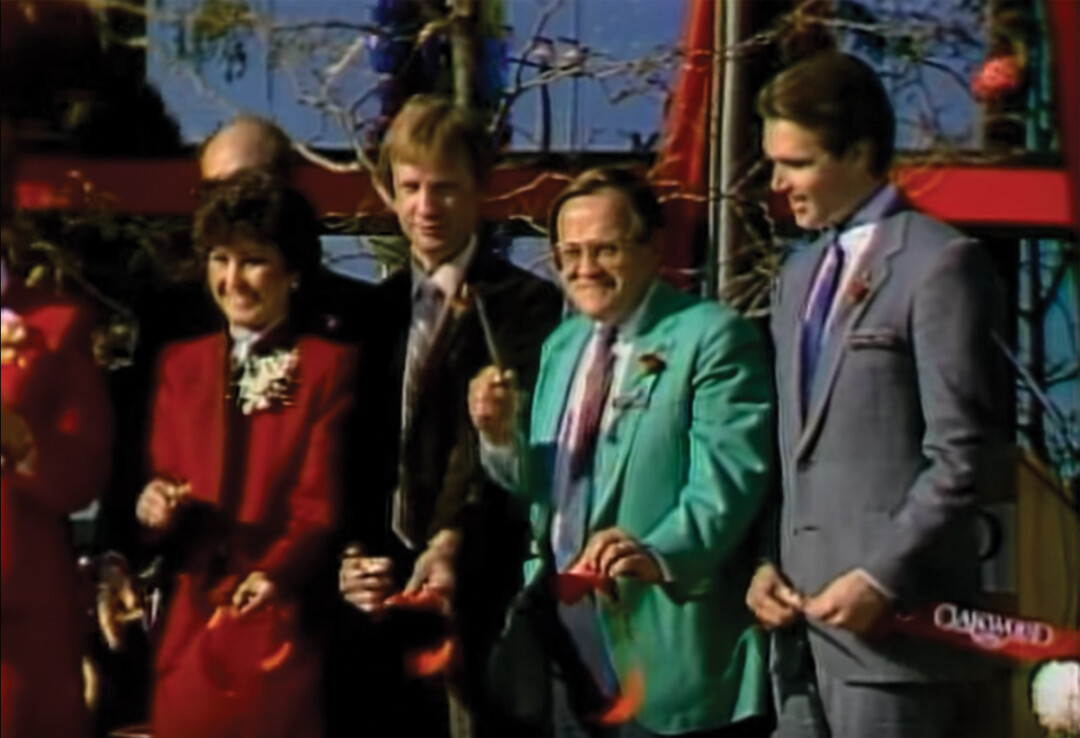
“We’re gonna take you by surprise!”
On a Saturday afternoon this September, I gave Oakwood Mall a look with fresh eyes. Having visited the surrounding commercial area often in the decades since, with the occasional trip to the actual mall, I have tended to focus more on the purpose of the visit, not the effectiveness of the setting. So I walked the length of the mall, from Macy’s to Café Court (finding one of the few remaining reflective gold ceiling bars) to Younkers and back the other way, down the wings to JC Penney and Sears before finishing my mini-workout.
The sensation you get today is still the sensation the creators of any mall had hoped I would receive: an indoor Main Street. The stores themselves seemingly have more individuality in their facades than ever before; the mall-facing wall of Scheels is real decorative brick, complete with waiting benches. The skylights bring in the sun and clouds of western Wisconsin. Every demographic of people passes you by: There is the obvious abundance of teens, some driving mini-cars shaped like animals, others buying pretzels at one of several hot food stations down the middle of the walkway. Yet people from Putnam Heights to Thorp are surely traversing the stores – and there are plenty of stores to peruse.
Through all the years I have been in Oakwood Mall, I cannot recall so much store occupancy. Of the few walled-over storefronts – those who have been in the area as long as the mall may remember the ubiquitous deep-red “Oh! Oh! Oakwood” motto adorning those temporary covers – about half were for renovations or new businesses. In the era of online commerce, Oakwood Mall is a planted flag to the relevance of brick and mortar.
That relevance is maintained through adaptation. Maher said that the mall stays on top of evolving demographic trends. “Our customers currently prefer fast fashion and they want value,” she says. “Thus you may notice more value-oriented stores popping up. Cosmetics, shoes, cellphones, and cell accessories are more popular today than they were 30 years ago.” A “GGP Malls” (for General Growth Properties) app features what one would desire at such a vast array of options: “a directory, store sales and event information, and dining and movie options,” plus parking guidance.
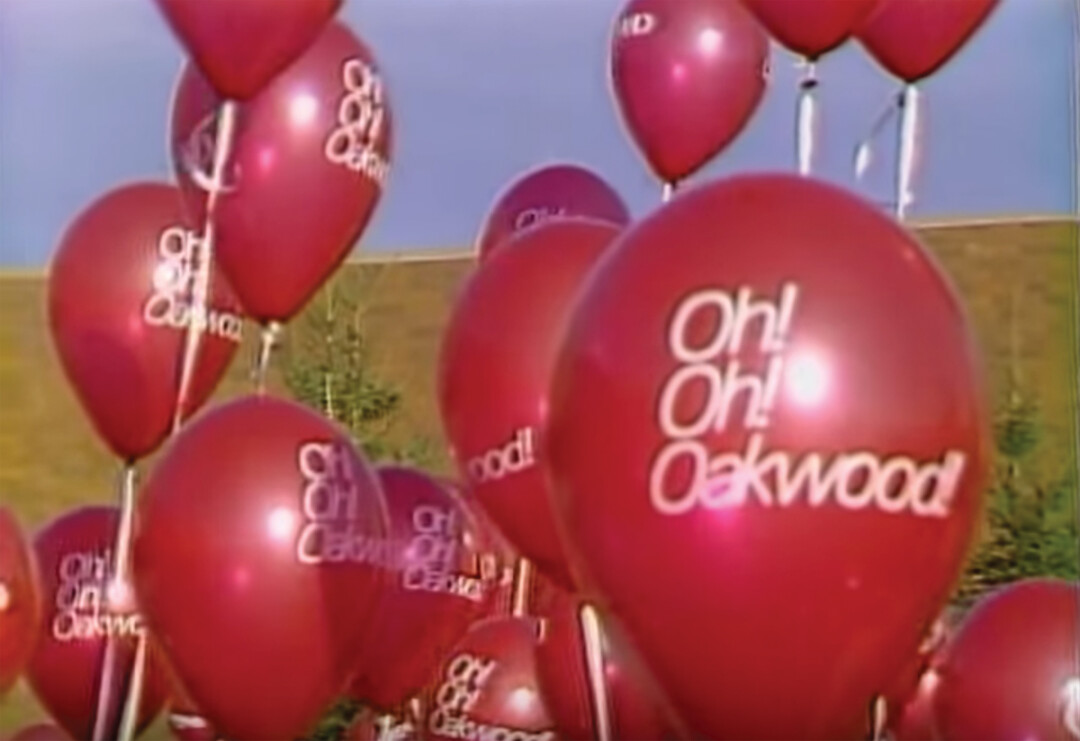
•••
Oakwood Mall is a story of surviving and thriving. As malls across the continent have shuttered, Oakwood stills draws vast numbers of people looking to make a purchase. The actual mall will, according to Maher, continue to engage with technological updates to address issues such as mall navigation and finding available parking. “GGP is currently testing technology to cure these pain points, and we are excited to enhance the shopping experience,” she says. “We are also working with our retailers to incorporate more ‘shop online and pick up in store.’ ”
Variety is another prospective element in the broader Oakwood development area. “There are entertainment elements that successful retail operators are including in their developments,” says Larson Companies President Thomas Larson. “The hospitality and service pieces, the theaters, and so on and so forth, and those elements of retail development continue to be improved.” Clumpner looks towards possible future re-purposing of parking lots, “even to the point where they talk about the expectation of self-parking cars being here much sooner than we think.”
The other part of the survive-and-thrive storyline is downtown Eau Claire. The emptiness of the 1990s – as my father used to say, you could fire a cannon down Barstow Street in the middle of the day and not hit anyone – turned out to be the ebb in the adjustment of function for that part of the city. Lewis, the former councilman, watched this happen around the nation: “There is a natural progression of suburbia, and then there’s a natural reaction to suburbia that brings people back into the core cities.”
Upon returning to the Eau Claire City Council as its president in the early 1990s, Lewis advocated for the revitalization of the North Barstow area – and slowly but surely, we saw environmental cleanup, the establishment of Phoenix Park, and the construction of corporate centers and apartments, all leading to what is objectively the most vibrant atmosphere felt in the downtown since the last days before the opening of London Square Mall. In his view, “You have to be forward-thinking in order to anticipate what those new generation needs and wants are, so that you can have the malls on the outskirts, you can have the redevelopment in the center city, and you can focus on both of them as you need to, to grow your community.”
Oakwood Mall changed the Chippewa Valley, and with the advantage of years of reflection, it has seemingly done so in a thoroughly positive way. To Clumpner, “community economic vitality” requires effort. “And this project demonstrated that,” he says. “It’ll be different things in the future, but the model is here, and it deserves to be replicated.” In the end, Oakwood Mall did take some of us by surprise – in a good way. It helps defines western Wisconsin. A 30-second jingle told you everything you needed to know.


















